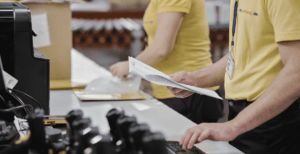When it comes to product design, thorough planning and well-informed decision-making are inevitable. Therefore, extensive research plays a crucial role in the product development process.
Here we highlight 9 aspects of product development that require thorough research.
1: Competitive Landscape
Before starting any design, we must look into the market and understand the competitive landscape. Analyzing all existing products from the same to similar ones in the market will give you valuable insights into consumer preferences, technological advancements, and potential gaps.
Then, the product development team can make sure that they meet or beyond market expectations thanks to this awareness.
2: Target Market
Understanding the consumers within your target market is just as crucial as knowing the market itself. Successful products resonate deeply with target consumers.
Through in-depth research, dig into the targeted consumer’s demographic profile, their behaviors, and buying patterns. By understanding their needs, wants, and pain points, product development team can effectively produce products that meet their unmet demands.
3: Demand Volumes
It can be challenging to accurately predict demand, but if you have the data on forecasted annual demand volume, you can optimize production schedules, inventory management, and resource allocation.
The following are the main techniques for estimating demand.
- Calculating from historical statistical data
- Gathering analysis from multiple experts
- Conducting market research
- Utilizing AI and big data
Demand forecasting will help you make those crucial decisions before you start spending

4: Ergonomic Concept and Physical Dimensions
User comfort and usability hold paramount importance in product design.
To make sure that products are both naturally effective and comfortable to use for extended periods of time, product development team, especially product designer must actively research and apply ergonomic concepts.
Then, you can effectively craft products that meet the needs of users in a natural and efficient manner by focusing on how the human body interacts with their designs.
Additionally, defining precise physical dimensions and form factors is crucial. This process not only enhances the aesthetic appeal of a product but also ensures its practicality.
5:Brand Alignment
The product development team must actively research the brand of the company and competitors. It will assist the team in choosing design components that strongly connect with the core values of the brand. It’s not only the product itself but also the packaging. By doing so, every product visually embodies the brand’s message and philosophy, creating a cohesive and recognizable image in the marketplace.
This strategic approach to design strengthens the brand’s position in the market, making it stand out from competitors and compelling consumers to repeatedly choose their products.
6:Parts of the Product
To make sure that each component meets the highest standards, product development team must actively investigate its performance requirements and reliability. This process involves rigorous testing and analysis to verify that every part will function effectively under various conditions and over extended periods of use.
By carefully evaluating and selecting suppliers, engineers and designers can secure components that not only meet quality standards but also contribute to the overall cost-effectiveness of the product.
The team must stay updated on the latest regulations and standards relevant to their products, incorporating these requirements into the design and production process. This diligence not only guarantees product safety and reliability but also enhances consumer trust and brand reputation.

7: Suppliers
Efficient manufacturing processes depend on forming strategic partnerships and creating streamlined workflows. By actively researching potential suppliers, the product development team can assess their capabilities and negotiate favorable terms. This thorough evaluation and negotiation process optimizes production timelines, enhances cost efficiencies, and strengthens supply chain resilience.
When the team selects the right suppliers that can meet the necessary quality and quantity requirements, it supports a smooth production process.
8: Assembly, Packaging, and Logistics
Achieving operational excellence requires careful attention to assembly line efficiencies, sustainable packaging solutions, and streamlined logistics. By conducting meticulous research, the company can optimize each stage of the process, ensuring products reach consumers intact and on time while minimizing their environmental footprint.
The product development team must focus on refining assembly processes to maximize efficiency and reduce waste. At the same time, the team need to develop packaging solutions that are both protective and environmentally friendly. Streamlined logistics further enhance the process, guaranteeing timely delivery and reducing the overall carbon footprint. Through thoughtful planning and execution, companies can achieve a balance between operational efficiency and sustainability, delivering high-quality products that meet both consumer expectations and environmental standards.
9: Strategic Sales, Marketing, and Distribution Channels
Research plays an important role not only in product design but also in strategic sales and marketing initiatives. For this aspect, it is crucial to share the data of user behavior, market analysis, competitive insights, and brand research with the sales and marketing teams gained during product development.
Armed with this information, the sales and marketing teams can conduct further in-depth research on their respective sales methods, evaluate potential distribution channels, and strategically plan marketing campaigns.
A consistent understanding of the market and users will help ensure a successful product launch.




